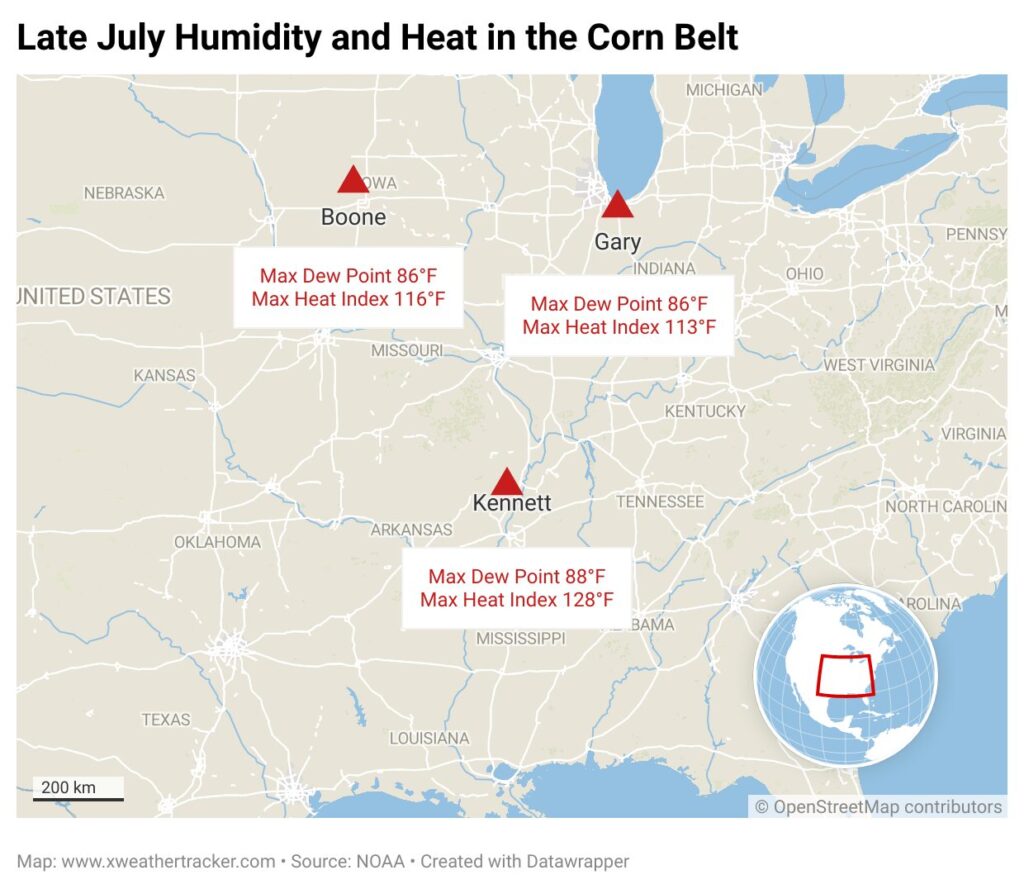The role of corn production in fuelling humidity is currently significant in the central United States
A massive heat dome is proving to be long-lasting and unforgiving across large areas of the United States currently and forecast to be be in place through to early August with 100 million people or more to endure ‘feel like’ temperatures in excess of 100°F (37.8°C).
While late July often brings the highest temperatures of the year for much of the U.S, forecasts are indicating temperatures will run 5-15°F above the historical average. In the mid west states high humidity is also experienced with the concept of ‘Corn Sweat’ contributing to the high wet bulb data and high heat index temperatures already experienced.
A single acre of corn can release 3,000 to 4,000 gallons of water daily through the process of transpiration and with over 90 million acres of corn grown in the U.S., this can increase local humidity by up 30-40% on hot days. The effect peaks in July and August during the corn’s tasseling and pollination stages. Combined with hot temperatures and moist air from the Gulf of Mexico, corn sweat has intensified the heat index, making the region feel oppressively warm and increasing discomfort and heat-related risks.
During the past week, dew point temperatures as high as 88°F (31°C) degrees were measured at Kennett, Missouri, with 86°F (30°C) at both Boone, Iowa and Gary, Indiana. Combined with the temperature and other factors, the Heat Index figure rose to 128°F (53°C) in Kennett.

The effects of corn sweat are predicted to continue and have the potential to amplify heat and humidity until the crops are harvested in early autumn.